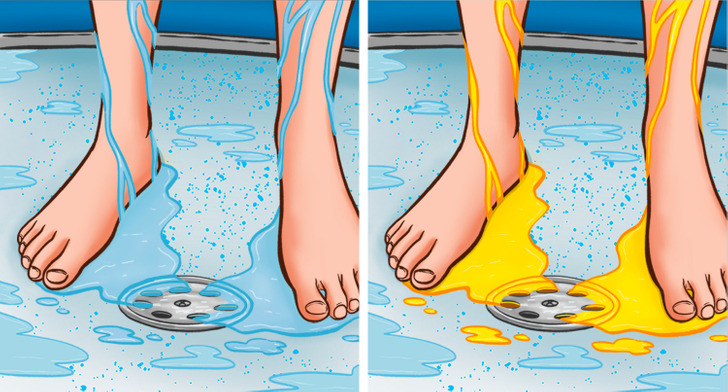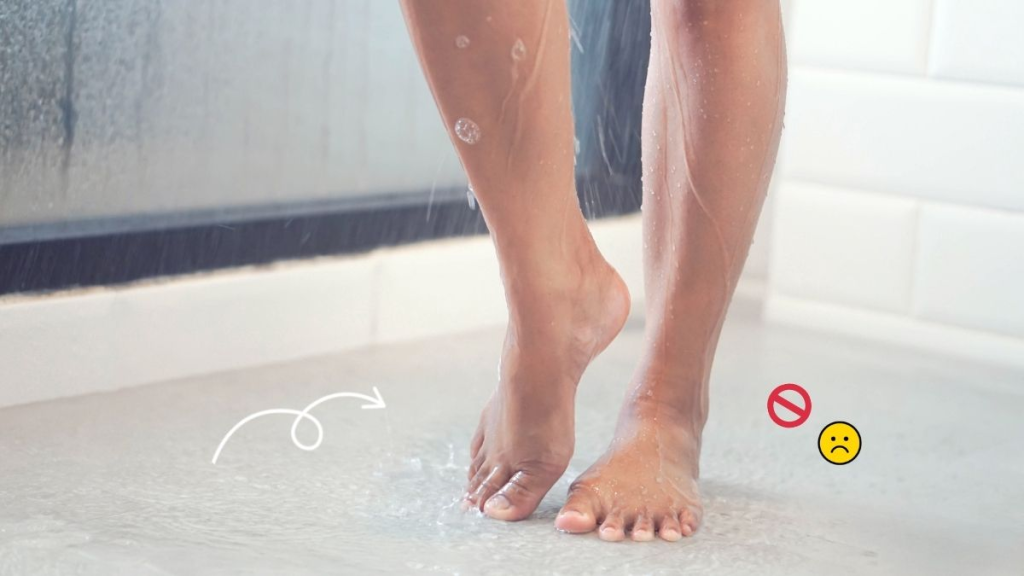Let’s be honest—we’ve all heard the argument: “Peeing in the shower saves water.” And yes, technically, that’s true. Swapping a toilet flush for a few seconds of multitasking might feel like a win for the environment. But here’s the thing—what seems harmless or even clever on the surface might be setting your body (and especially your pelvic health) up for long-term trouble.
A video by Dr. Emma Qureshey, a Houston-based OB-GYN, recently went viral for highlighting a critical concern: why women shouldn’t pee in the shower, and more importantly, why peeing while standing up could backfire.
If that raised your eyebrows, keep reading—we’re diving deep into the science, the habits, and what your bladder’s trying to teach you.

The Standing Position Is Not Your Bladder’s Friend
Your body is smart. Very smart. And your bladder learns behavior through repetition. Every time you urinate, your brain logs the context: the environment, your position, and even the sound of running water. Over time, it builds patterns.
When you pee standing up (even casually, in the shower), you’re training your pelvic floor to release in a position it wasn’t designed for. This can confuse your bladder-brain connection, making it harder for your pelvic muscles to engage properly during normal bathroom trips.
For women especially, this is a red flag. Unlike men, the female anatomy isn’t built for upright urination. Squatting or sitting allows the pelvic floor muscles to fully relax and support complete emptying of the bladder. Standing disrupts this natural flow, literally and neurologically.
Video: What Happens If You Hold Pee Often?
The Shower Isn’t Helping Your Brain-Bladder Connection
Let’s talk triggers. You know how hearing running water can make you feel like you suddenly need to pee? That’s your bladder reacting to a conditioned cue. Peeing in the shower—where water’s constantly flowing—only intensifies that link.
Over time, your brain might associate any water-related sound (dishwashing, brushing teeth, rainstorms) with urination. Sounds funny, right? But it can become a real problem, especially for those already dealing with overactive bladder issues or urgency incontinence.
So, what started as a harmless habit to save a flush might spiral into an unwanted bladder reflex you didn’t ask for.
What About Hygiene? Here’s the Truth

Here’s a not-so-glamorous reality: your shower isn’t as clean as you think. Even if it has great drainage, urine can linger in grout lines, corners, and textured flooring—especially if you’re not deep-cleaning regularly.
And if you share your shower? Yeah, that’s an even bigger “ew” moment. Urine contains bacteria, and over time, it can build up in places you don’t see. Let’s not even get started on the splash factor when the water hits it midstream.
So while the water’s running, and everything seems like it’s washing away, the residue might be hanging around longer than you’d like.
Pelvic Floor Dysfunction: A Risk You Can’t Ignore
Video: Do you pee in the shower?
One of the most important points Dr. Qureshey makes is how standing urination may contribute to pelvic floor dysfunction over time. Your pelvic floor is a network of muscles that support your bladder, uterus, and rectum. These muscles need proper engagement and release to stay strong.
Repeatedly peeing in the wrong position can disrupt the coordination of these muscles, leading to:
- Incomplete emptying of the bladder
- Leaking urine when coughing or sneezing
- Increased frequency or urgency to urinate
- Pain or discomfort during urination
And once these patterns set in, reversing them isn’t always easy. That’s why prevention is key—and it starts with posture.
There’s a Better Way to Be Water-Wise
We get it. Saving water matters. But there are smarter ways to be eco-conscious that don’t mess with your health.
- Install a dual-flush toilet: Use the light flush for liquids, heavy for solids. Simple and effective.
- Collect greywater from your shower and reuse it for flushing.
- Time your bathroom visits around your shower if you’re looking to combine tasks—but do them separately.
In the long run, compromising your pelvic floor just to skip a flush isn’t worth it. Your body does a lot for you—don’t confuse it with mixed signals.
Is It Ever Okay to Pee in the Shower?

Let’s keep it real: accidents happen. If you’ve done it occasionally or during a moment of desperation, no judgment. It won’t wreck your bladder overnight. But turning it into a daily habit, especially while standing, is where things get tricky.
The issue isn’t the occasional convenience. The problem comes with repetition. Like brushing your teeth with your non-dominant hand every day—it rewires habits you didn’t mean to form.
So, if you’re standing and peeing regularly, your body will eventually treat that as its new normal. And that’s a hard pattern to unlearn.
Conclusion: A Healthy Habit Is Worth More Than a Flushed Gallon
It might seem like a small act, but peeing in the shower—especially while standing—can have ripple effects on your body you wouldn’t expect. From weakening your pelvic muscles to confusing your bladder’s instincts, this habit might cost more than a few gallons of water saved.
Listen to what your body’s telling you. Give it consistency, posture, and support. You don’t need to be perfect—you just need to be mindful.


